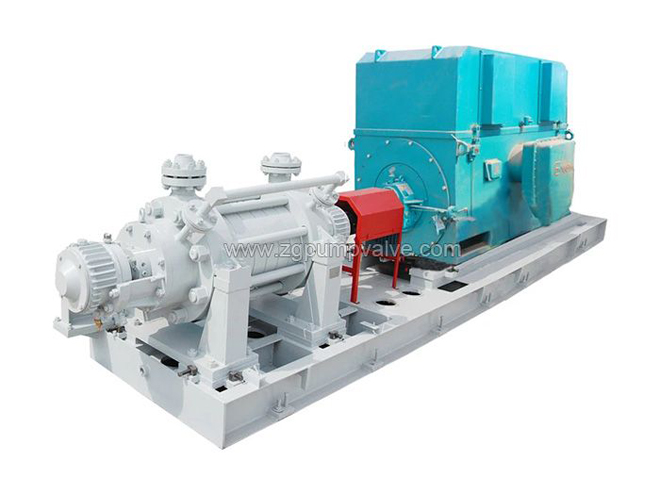Learn - Apr. 01, 2021
Centrifugal Pumps are the most popular and commonly used type of pump for the transfer of fluids. In simple words, it is a pump that uses a rotating impeller to move water or other fluids by using centrifugal force. These are the undisputed pump choice especially for delivering liquid from one location to another in numerous industries including agriculture, municipal (water and wastewater plants), industrial, power generation plants, petroleum, mining, chemical, pharmaceutical, and many others.
Centrifugal Pumps are useful since they can generally handle large quantities of fluids, provide very high flow rates (which may vary with the changes in the Total Dynamic Head (TDH) of the particular piping system) and have the ability to adjust their flow rates over a wide range.
Centrifugal pumps are generally designed and suitable for liquids with a relatively low viscosity that pours like water or light oil. More viscous liquids such as 10 or 20 wt. oils at 68-70 deg F will require additional horsepower for centrifugal pumps to work. For viscous liquids of more than 30 wt. oils, positive displacement pumps are preferred over centrifugal pumps to help lower energy costs. Next, the centrifugal pump supplier will introduce how to select a centrifugal pump.

The following chief factors affect the performance of a centrifugal pump and need to be considered while choosing a centrifugal pump:
It can be defined as resistance to shear when energy is applied. In general, a centrifugal pump is suitable for low viscosity fluids since the pumping action generates high liquid shear.
The density of a fluid is its mass per unit of volume. A fluid’s mass per unit volume and gravity of a fluid is the ratio of a fluid’s density to the density of water. It directly affects the input power required to pump a particular liquid. If you are working with a fluid other than water, it is important to consider the specific density and gravity since the weight will have a direct effect on the amount of work performed by the pump.
Pumping conditions like temperature and pressures are an important consideration for any operation. For example – High-temperature pumping may require special gaskets, seals and mounting designs. Similarly, an adequately designed pressure retaining casing may be required for high-pressure conditions.
NPSH is a term that refers to the pressure of a fluid on the suction side of a pump to help determine if the pressure is high enough to avoid cavitation. Cavitation refers to the formation of bubbles or cavities in a liquid, developed in areas of relatively low pressure around an impeller and can cause serious damage to the impeller and lead to decreased flow/pressure rates among other things. One must ensure that the system’s net positive suction head available (NPSHA) is greater than the pump’s net positive suction head required (NPSHR), with an appropriate safety margin.
The vapour pressure of a fluid is the pressure, at a given temperature, at which a fluid will change to a vapour. It must be determined in order to avoid cavitation as well as bearing damage caused by dry running when the fluid has evaporated.
Owing to the use in a diverse range of applications, pumps come with different capacities and in various sizes. You should also consider the pressure and volume requirements of the specific operations for which you need the pump. The horsepower required is another important consideration when it comes to volume and discharge pressure.